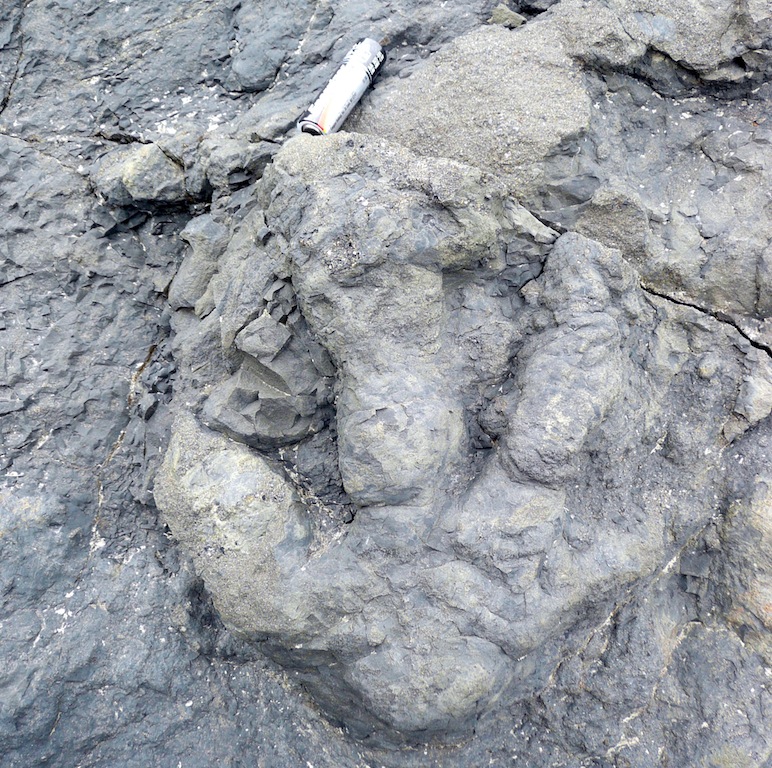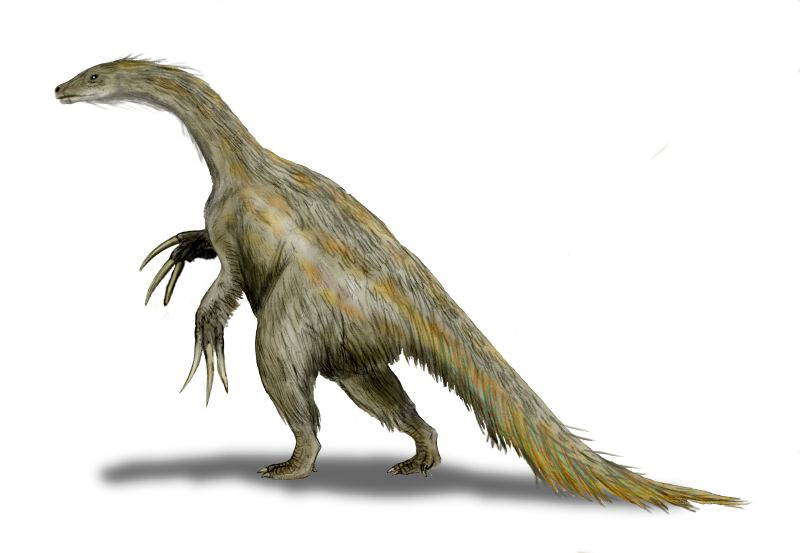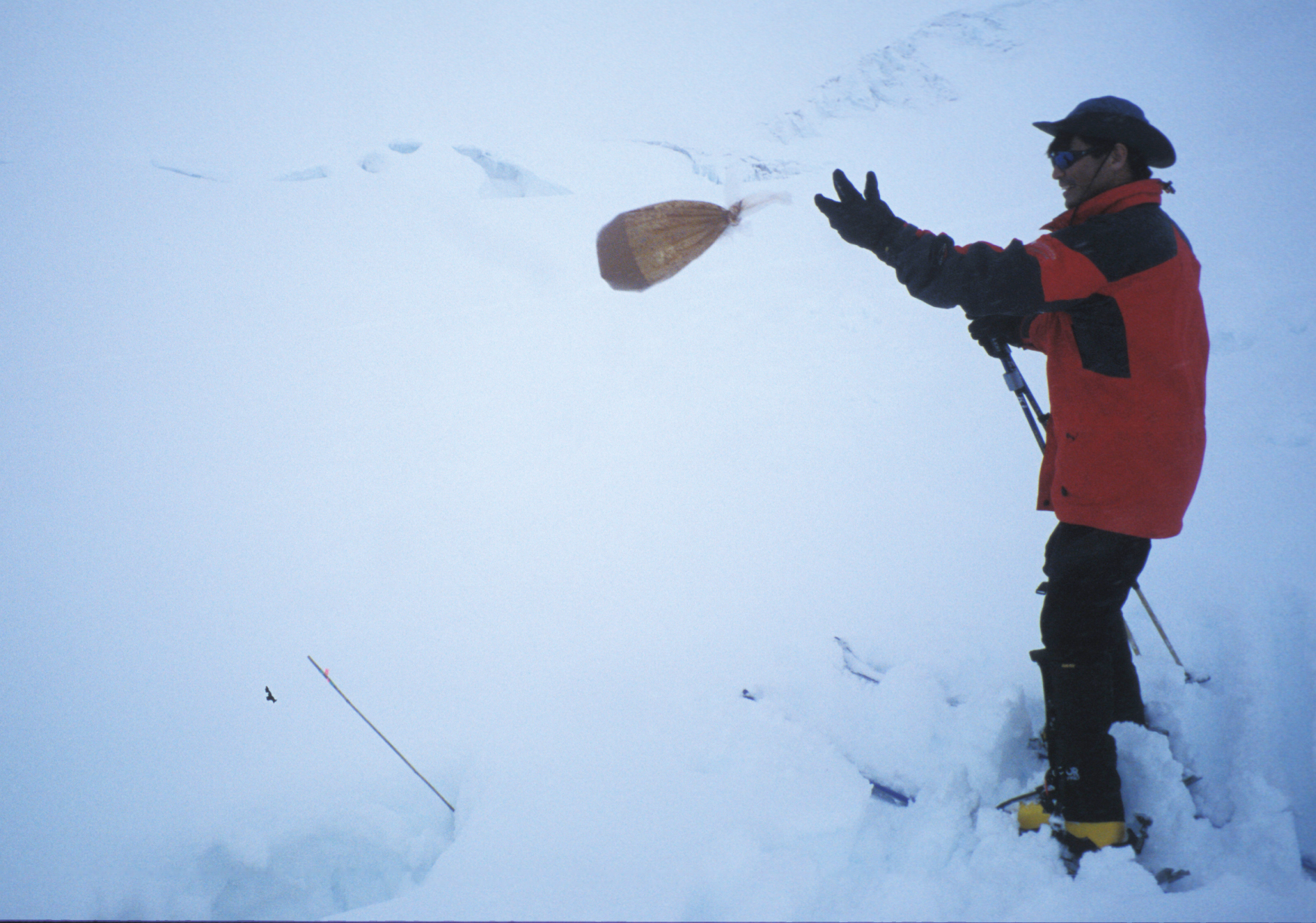A “totally weird” dinosaur; new waste study in Denali
September 27, 2012
9/27/2012
A couple of summers ago, David Tomeo was exploring a creekbed in Denali National Park, preparing for a field seminar on the park’s dinosaurs he would help lead a few weeks later. With a trained eye for the impressions dinosaurs pressed into mud millions of years ago, Tomeo walked to a large boulder in the middle of a landslide.

“Right in the middle of it, a four-toed track stood out,” said Tomeo, program director for Alaska Geographic at the Murie Science and Learning Center in Denali Park.
Tomeo snapped a picture of the track and sent it to Tony Fiorillo, a dinosaur hunter from the Museum of Nature and Science in Dallas who often travels to Alaska.
Fiorillo was intrigued. The track looked like that of a therizinosaur, a tall, feathered meat-eater with sickle-like claws that extended a few feet from the three fingers of each hand.
“Therizinosaurs are totally weird,” Fiorillo said. “These guys are unlike any predatory dinosaur you’ve ever seen. From head to feet, they are different.”
Fiorillo later visited the site with Tomeo and conferred with other dinosaur experts. Therizinosaurs had been recorded in Mongolia and paleontologists found the bones of a closely related creature in Utah, but Fiorillo had never seen the evidence of one himself.
After removing his doubts about the track, a process that took several years, Fiorillo recently co-authored a paper in which he reported on the first record of a therizinosaur from Alaska.
The eclectic therizinosaur, which walked Denali about 70 million years ago, probably made it to Alaska via the Bering Land Bridge. The dinosaur joins the ranks of discovered prehistoric creatures that seemed to have lived in great numbers in a warmer (but just as dark in winter) Alaska of long ago.

In other Denali National Park news, researchers have tracked the movement of human waste down a well-traveled glacier on Mount McKinley, estimated that the byproduct of climbers on the West Buttress route will emerge from melting ice as soon as 15 years from now.
Michael Loso is coauthor of a new paper in the journal Arctic, Antarctic and Alpine Research. In it, the Alaska Pacific University professor reports on a park-sponsored study to determine the fate of human waste deposited on Kahiltna Glacier, the frozen pathway that leads more than 1,000 climbers each year up Mount McKinley. UAA graduate student Katelyn Goodwin and UAF’s Matthias Braun also coauthored the paper.
The National Park Service requires climbers to remove their feces from base camp and from a climbing camp at 17,000 feet using a portable Clean Mountain Can, but climbers can dispose of the waste later by tossing biodegradable bags in crevasses. The new study opened the eyes of managers.

“Back in the 1980s we thought it would take thousands of years to come out (after being thrown in a crevasse),” said Roger Robinson, a mountaineering ranger at Denali who invented the Clean Mountain Can waste-removal system. “We also thought waste on the surface would break down pretty fast. That’s also been disproven.”
Loso and his coauthors tracked the speed of the glacier, the depth of waste buried just beneath its surface for years and studied feces buried in the snow for a year. They concluded that human waste buried in the ice of Kahiltna Glacier near an airstrip first used in 1954 will reemerge as early as 2025. They also found that “waste, though presently buried, is already contaminating the englacial water supply that feeds Kahiltna River and that it will further contaminate supraglacial meltwater once it emerges at the surface.”
Robinson, who is organizing a “Sustainable Summits” conference next September in Talkeetna with an agenda that includes managing human waste, said that a new park policy requiring Denali climbers to pack out all their waste is his hope for the future.
“I think that we’re close,” Robinson said. “With a little more education we can take it one step farther and take it all off.”
Image one: A therizinosaur track in Denali National Park discovered by David Tomeo. Photo by David Tomeo.
Since the late 1970s, the University of Alaska Fairbanks’ Geophysical Institute has provided this column free in cooperation with the UAF research community. Ned Rozell is a science writer for the Geophysical Institute.


